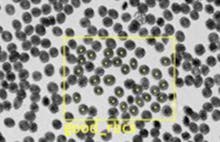High White Blood Cell Count
Definition, Causes and RangesWhite blood cells, or leukocytes, are the cells responsible for protecting the body against infection by viruses, parasites, fungi, bacteria and other invading organisms. In the body tissues and in the bloodstream, white blood cells identify and destroy pathogens (usually foreign, living microorganisms that can cause infection).
Although white blood cells are crucial for the body’s immune response, they normally make up around only 0.2% of the total blood cells. An elevated white blood cell count, also called leukocytosis, can indicate a range of health problems such as infection or a blood or bone marrow disorder.
What is considered a high white blood cell count?
As with all blood count reference ranges, what is considered a high white blood cell count varies from one laboratory to another and depends upon both the laboratory equipment in use and the demography of the population. Reference ranges for laboratories are calculated statistically, based on what is ‘normal’ for the population they serve.
However, for adults, typically any value above around 11,000 white blood cells per microliter of blood is considered an elevated white blood cell count.
High white blood cell count causes
Causes of an elevated white blood cell count include infection, abnormalities in the bone marrow, smoking, chronic lung disease, immune disorders, inflammatory or allergic reactions or even physical and emotional stress.
When infecting microorganisms are multiplying in the blood or tissues, the bone marrow is stimulated to increase its activity.
It begins producing extra white blood cells to fight the infection. Because infection can also lead to inflammation and white cells are produced in response to this, the inflammatory response itself can also be associated with an increase in white blood cell count. Overall, the most common cause for a high white blood cell count is response to infection.
Another potential cause of an elevated white blood cell count is leukemia. This is effectively a cancerous change of the blood and bone marrow which causes significant overproduction of white blood cells. However, these extra cells often don’t work properly, leaving leukemia patients susceptible to other infections.
Smoking and Chronic Obstructive Pulmonary Disease (COPD) that results from smoking can result in restricted airflow to the lungs. As the lungs and airways become more inflamed, the body creates more white blood cells in response.
Other causes of abnormally raised white cell count include immune system disorders such as Crohn’s disease or Graves’ thyroiditis and reactions to certain medications can cause the body to increase white blood cell levels.
High white blood cell count symptoms
Raised white blood cell count is itself asymptomatic and therefore any associated features, if present, will typically be associated with the underlying cause. For example, a leukocytosis caused by leukemia may be accompanied by fatigue, general malaise and easy bruising.
There are no symptoms that can reliably indicate the presence of a raised white cell count. Doctors will usually consider carrying out an investigation to include the blood count if the symptoms described by a patient suggest that a blood count could be helpful to make a diagnosis.
What are the risks of having elevated white blood cell count?
On its own, leukocytosis is usually not harmful. An abnormally raised white blood cell count is not a disease condition, but can point to another underlying cause such as infection, cancer or autoimmune disorders.
An abnormally high white blood cell count should always be considered for its possible causes. Not every elevated white cell count is a problem, since it may represent a normal finding in response to an infection, which settles with time. However, if the elevated count persists then a doctor may decide that it requires further investigation to rule out other undiagnosed conditions.
Since leukopenia is itself asymptomatic and chronic infection may go unrecognized because of failure to mount a symptomatic response, immunocompromised patients will usually have a periodic blood count to monitor their white cell count along with other regular health checks.
Discover Sight's Automated CBC Analyzer
Disclaimer: The content of this knowledge post intends to provide general information related to topics that are relevant to blood diagnostics and may not be used in relation to the operation of Sight OLO. For detailed information on the diagnostic parameters and specifications of Sight OLO, please refer to the official Operator's Manual.


